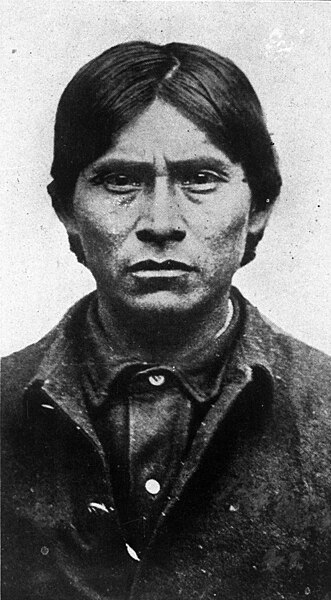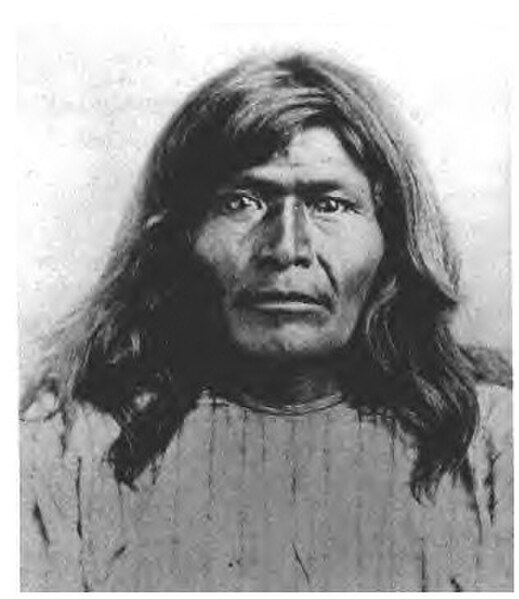Apache Kid Wilderness is a 44,626-acre (18,060 ha) Wilderness area located within the Magdalena Ranger District of the Cibola National Forest in the state of New Mexico. Straddling a southern portion of the San Mateo Mountains of southwestern Socorro County, the area is characterized by rugged, narrow, and steep canyons bisecting high mountain peaks exceeding 10,000 feet (3,000 m). The highest peak is West Blue Mountain which reaches an elevation of 3,151 metres (10,338 ft).
A view from the Apache Kid Wilderness. Courtesy of the US Forest Service.
The Apache Kid, for whom the Wilderness is named.
Vicks Peak within the Wilderness is named for Victorio, a warrior and chief of the Chihenne band of the Chiricahua Apache.
The Apache Kid Wilderness contains critical habitat for the threatened Mexican Spotted Owl.
The Cibola National Forest is a 1,633,783 acre United States National Forest in New Mexico, US. The name Cibola is thought to be the original Zuni Indian name for their pueblos or tribal lands. The name was later interpreted by the Spanish to mean "buffalo." The forest is disjointed with lands spread across central and northern New Mexico, west Texas and Oklahoma. The Cibola National Forest is divided into four Ranger Districts: the Sandia, Mountainair, Mt. Taylor, and Magdalena. The Forest includes the San Mateo, Magdalena, Datil, Bear, Gallina, Manzano, Sandia, Mt. Taylor, and Zuni Mountains of west-central New Mexico. The Forest also manages four National Grasslands that stretch from northeastern New Mexico eastward into the Texas Panhandle and western Oklahoma. The Cibola National Forest and Grassland is administered by Region 3 of the United States Forest Service from offices in Albuquerque, New Mexico. Elevation ranges from 5,000 ft to 11,301 ft. The descending order of Cibola National Forest acres by county are: Socorro, Cibola, McKinley, Catron, Torrance, Bernalillo, Sandoval County, New Mexico, Lincoln, Sierra, and Valencia counties in New Mexico. The Cibola National Forest currently has 137,701 acres designated as Wilderness. In addition to these acres, it has 246,000 acres classified as Inventoried Roadless Areas pursuant to the Roadless Area Conservation Rule.

The Apache Kid Wilderness in the Cibola National Forest. Photo: US Forest Service.
View from Sandia Peak, in the Sandia Mountains. In the background is Albuquerque, New Mexico. In the center is a tramway car moving along the Sandia Peak Tramway.
The Cibola National Forest contains thousands of acres of critical habitat for the threatened Mexican spotted owl.
A pronghorn herd standing in front of the Magdalena Mountains. Photo courtesy of Josh Hicks.






